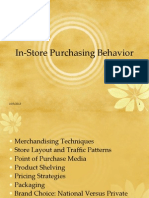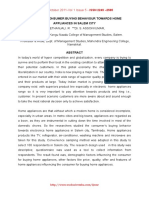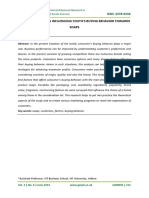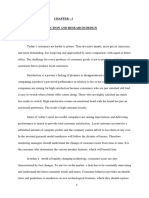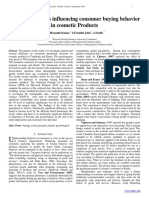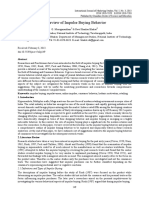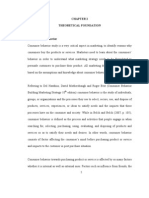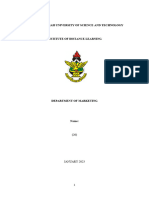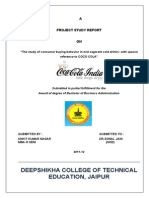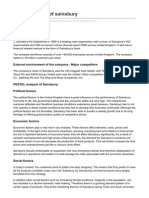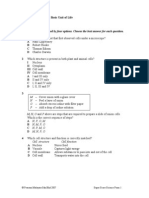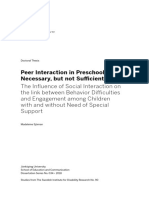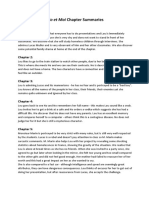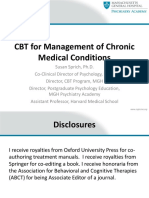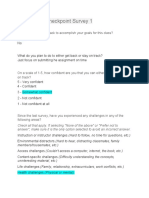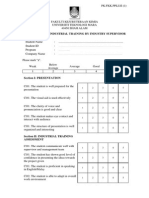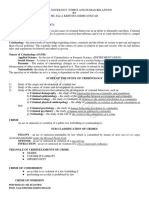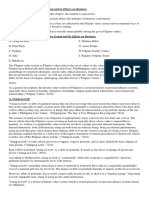Journal of Marketing Research
CONSUMER BUYING BEHAVIOUR A FACTOR OF COMPULSIVE
BUYING PREJUDICED BY WINDOWSILL PLACEMENT
Journal of Marketing Research
r
Fo
Journal:
Manuscript ID:
Manuscript Type:
Topics and Methods:
Draft
New Submission
Physiological/neurological bases < Theoretical Foundation, Sampling/
research design < Theoretical Foundation
ew
vi
Re
ly
On
Confidential
Electronic copy available at: http://ssrn.com/abstract=2177187
�Page 1 of 18
CONSUMER BUYING BEHAVIOUR A FACTOR OF COMPULSIVE
BUYING PREJUDICED BY WINDOWSILL PLACEMENT
The authors of this research paper are
Irfan Hameed
PhD Scholar & Lecturer, Iqra University
Business Administration Department, Main Campus, Karachi, Pakistan
E-mail: irfan_h144@yahoo.com
Tel: +92-333-550-30-36
r
Fo
Yasir Ali Soomro
PhD Scholar & Lecturer, Iqra University
Business Administration Department, Main Campus, Karachi, Pakistan
E-mail: yasir.soomro@hotmail.com
Tel: +92-345-356-43-85
Re
Imran Hameed
PhD, Aix Marseille Universit, France
Assistant Professor, Iqra University
Business Administration Department, Main Campus, Karachi, Pakistan
E-mail: im_hameed@hotmail.com
Tel: +92-347-511-00-80
ew
vi
On
The research has been done without getting financial support from any one instead the authors
themselves.
ly
1
2
3
4
5
6
7
8
9
10
11
12
13
14
15
16
17
18
19
20
21
22
23
24
25
26
27
28
29
30
31
32
33
34
35
36
37
38
39
40
41
42
43
44
45
46
47
48
49
50
51
52
53
54
55
56
57
58
59
60
Journal of Marketing Research
In case of any query, please feel free to contact Irfan Hameed on email id:
irfan_h144@yahoo.com.
Regards,
Irfan Hameed
PhD Scholar & Lecturer,
Business Administration Department
Iqra University, Main Campus, Karachi.
This is an electronic copy, so dont require signature
Confidential
Electronic copy available at: http://ssrn.com/abstract=2177187
�Journal of Marketing Research
Consumer buying behavior a factor of compulsive buying
CONSUMER BUYING BEHAVIOUR A FACTOR OF COMPULSIVE
BUYING PREJUDICED BY WINDOWSILL PLACEMENT
ABSTRACT
This empirical research investigates the impact of windowsill placement
on the compulsive buying behavior of consumers on three different types of
products i.e., convenience products, shopping products, and specialty products.
We hypothesized the positive effect of windowsill placement on all three types of
product categories. The categorical regression (Optimal scaling) was used to test
r
Fo
the hypotheses. The data was collected via self administered questionnaire from
Pakistan through systematic random sampling, and the sample consisted of 500
respondents. The results of data analysis supported only the 1st hypothesis which
Re
highlighted that placement of products in shopping centers has an impact of
unplanned buying of consumers for convenience products.
vi
KEY WORDS: WINDOWSILL PLACEMENT, COMPULSIVE BUYING, CONVENIENCE PRODUCTS,
ew
SHOPPING PRODUCTS, SPECIALTY PRODUCTS.
INTRODUCTION
On
This study is an insight into the compulsive buying pattern of individuals on the basis of
maneuvers used by marketers. The relationship between windowsill placement and the demand
ly
1
2
3
4
5
6
7
8
9
10
11
12
13
14
15
16
17
18
19
20
21
22
23
24
25
26
27
28
29
30
31
32
33
34
35
36
37
38
39
40
41
42
43
44
45
46
47
48
49
50
51
52
53
54
55
56
57
58
59
60
of customers have been studied with respect to different consumer product categories.
Windowsill placement has been used as independent variable and types of consumer products
have been used as dependent variables namely convenience products, shopping products, and
specialty products. Unsought products have not been used for research purpose because of its
very nature. Operational definitions of the variables have been given below:
Confidential
Page 2 of 18
�Page 3 of 18
Consumer buying behavior a factor of compulsive buying
Consumer products are products and services bought by final consumers for personal
consumption. Marketers usually classify these products and services further based on how
consumers go about buying them. Consumer products include convenience products, shopping
products, specialty products, and unsought products. These products differ in the ways
consumers buy them and, therefore, in how they are marketed (Kotler, Armstrong, 2011).
Convenience products are consumer products and services that customers usually buy
r
Fo
frequently, immediately, and with minimal comparison and buying effort. Examples include
laundry detergent, candy, magazines, and fast food. Convenience products are usually low
priced, and marketers place them in many locations to make them readily available when
Re
customers need or want them (Kotler, Armstrong, 2011).
ew
vi
Shopping products are less frequently purchased consumer products and services that
customers compare carefully on suitability, quality, price, and style. When buying shopping
products and services, consumers spend much time and effort in gathering information and
On
making comparisons. Examples include furniture, clothing, used cars, major appliances, and
ly
1
2
3
4
5
6
7
8
9
10
11
12
13
14
15
16
17
18
19
20
21
22
23
24
25
26
27
28
29
30
31
32
33
34
35
36
37
38
39
40
41
42
43
44
45
46
47
48
49
50
51
52
53
54
55
56
57
58
59
60
Journal of Marketing Research
hotel and airline services. Shopping products marketers usually distribute their products through
fewer outlets but provide deeper sales support to help customers in their comparison efforts
(Kotler, Armstrong, 2011).
Specialty products are consumer products and services with unique characteristics or brand
identification for which a significant group of buyers is willing to make a special purchase effort.
Examples include specific brands of cars, high-priced photographic equipment, designer clothes,
Confidential
�Journal of Marketing Research
Consumer buying behavior a factor of compulsive buying
and the services of medical or legal specialists. A Lamborghini automobile, for example, is a
specialty product because buyers are usually willing to travel great distances to buy one. Buyers
normally do not compare specialty products. They invest only the Time needed to reach dealers
carrying the wanted products (Kotler, Armstrong, 2011).
Unsought products are consumer products that the consumer either does not know about or
knows about but does not normally consider buying. Most major new innovations are unsought
r
Fo
until the consumer becomes aware of them through advertising. Classic examples of known but
unsought products and services are life insurance, preplanned funeral services, and blood
donations to the Red Cross. By their very nature, unsought products require a lot of advertising,
Re
personal selling, and other marketing efforts (Kotler, Armstrong, 2011).
ew
vi
Windowsill placement refers to the placement of the product in the shopping center also known
as shelf placement. In this study word windowsill placement denotes favorable position in the
shopping center like placing it just behind the cashier or at the entrance of the store.
ly
On
1
2
3
4
5
6
7
8
9
10
11
12
13
14
15
16
17
18
19
20
21
22
23
24
25
26
27
28
29
30
31
32
33
34
35
36
37
38
39
40
41
42
43
44
45
46
47
48
49
50
51
52
53
54
55
56
57
58
59
60
Three hypothesized statements have been made to check the relationship between dependent and
independent variable (s). Firstly the relationship of shelf placement on sales of convenience
products, secondly the relationship of shelf placement on sales of shopping products, thirdly the
relationship of shelf placement on sales of specialty products.
The impact of placement has been studied with the help of the statistical test by using Statistical
Package for Social Science (SPSS). The test used is categorical regression (Optimal scaling) to
Confidential
Page 4 of 18
�Page 5 of 18
Consumer buying behavior a factor of compulsive buying
interpret the findings that whether placement of products in shopping centers has an impact of
unplanned buying of consumers or not. If yes then it is on which types of products.
LITERATURE REVIEW
Consumer research on compulsive buying began with work by Faber, O'Guinn, and
Krych (1987), Faber and O'Guinn (1988, 1989), O'Guinn and Faber (1989), and Valence,
d'Astous, and Fortier (1988). Faber and O'Guinn (1988) defined compulsive consumers as
r
Fo
"people who are impulsively driven to consume, cannot control this behavior, and seem to buy in
order to escape from other problems". Edwards (1992) defined compulsive buying behavior as "a
Re
chronic, abnormal form of shopping and spending characterized, in the extreme, by an
overpowering, uncontrollable, and repetitive urge to buy, with disregard for the consequences"
vi
Research on compulsive consumption reveals a number of consistent findings. As discussed by
ew
Faber, Christenson, de Zwaan, and Mitchell (1995), compulsive consumption behaviors are
associated with low levels of self-esteem, high levels of depression, and high levels of anxiety. In
On
their summary of the literature, DeSarbo and Edwards (1996) linked compulsive consumption to
a number of psychological traits, including "dependence, denial, depression, lack of impulsive
ly
1
2
3
4
5
6
7
8
9
10
11
12
13
14
15
16
17
18
19
20
21
22
23
24
25
26
27
28
29
30
31
32
33
34
35
36
37
38
39
40
41
42
43
44
45
46
47
48
49
50
51
52
53
54
55
56
57
58
59
60
Journal of Marketing Research
control, low self-esteem, approval seeking, anxiety, escape coping tendencies, general
compulsiveness, materialism (envy), isolation, excitement seeking, and perfectionism" . In their
research, DeSarbo and Edwards identified two clusters of compulsive consumers. They
identified an internal compulsive buying group that they argued is driven by deep psychological
problems, their personality structure, and family upbringing. The second group ofcompulsive
consumers appeared to be driven by personal circumstances rather than such deep-seated
psychological factors. The trait of impulsiveness was significant for both groups of respondents.
Confidential
�Journal of Marketing Research
Consumer buying behavior a factor of compulsive buying
d'Astous (1990) investigated compulsive consumption among a population of "normal"
consumers. She obtained evidence that the same theoretical relations found in previous studies,
in which known groups of compulsive consumers were compared to the general population, are
found in the general population
In a recent critique of contemporary personality research in consumer behavior, Endler and
r
Fo
Rosenstein (1997) advocated an interactionist approach as a means ofincreasing the predictive
ability of personality traits. In another influential article, Buss (1989) made a similar argument.
He suggested that researchers investigate manipulations and traits jointly, which he proposed is
Re
similar to looking at the interaction between person and situation. In his article, Buss also
vi
distinguished between two types of traits. Borrowing ideas from Allport (1961), he distinguished
ew
surface traits from psychological traits. He suggested that surface traits are summaries of surface
behaviors. In contrast, psychological traits exist at a deeper level and act asthe foundation for the
more specific surface traits. Allport (1961) also used the term secondary traits to describe the
On
surface orstylistic trait idea.
ly
1
2
3
4
5
6
7
8
9
10
11
12
13
14
15
16
17
18
19
20
21
22
23
24
25
26
27
28
29
30
31
32
33
34
35
36
37
38
39
40
41
42
43
44
45
46
47
48
49
50
51
52
53
54
55
56
57
58
59
60
In contrast to surface traits, cardinal and central traits are proposed to exist at a deeper level
(Allport, 1961). Few in number, cardinal traits identify basic dimensions on which individuals
diverge. We define cardinal traits as the basic, underlying predispositions of individuals that
arise from genetics and their early learning history. Allport (1961) proposed that the number is
likely to be between 5 and 10. If a limited set of cardinal traits can be identified, it will provide
parsimony in developing our models of individual differences in consumer behavior. As noted by
Confidential
Page 6 of 18
�Page 7 of 18
Consumer buying behavior a factor of compulsive buying
Morgan and Hunt (1994), parsimony is an important scientific principle. Although disagreement
is found in the psychological literature as to how manycardinal traitsmay exist, we tentatively
propose that consumer researchers should first turn to the Five-Factor Model of personality to
identify them (Costa & McCrae, 1985; Goldberg, 1993; Wiggins, 1996). In this article, we
employ the traits of extraversion, agreeability, stability, openness to experience, and
conscientiousness found in the Big Five model developed by Goldberg (1992) and refined by
Saucier (1994). Central traits represent the third category of individual difference variables found
r
Fo
in the hierarchical model. Based on Buss (1989) and Allport (1961), we conceptualize central
traits as narrower in application and emerging from the interplay of cardinal traits, the culture in
which an individual lives, and the learning history of the individual. These individual difference
Re
dimensions are more narrowly focused than the cardinal traits, and dozens may exist.
vi
Although music is generally thought of as an entertainment medium, it can also be used to
ew
achieve other objectives. In particular, music is employed in the background of production
facilities, offices and retail stores to produce certain desired attitudes and behaviors among
employees and/or customers. For example, background music is thought to improve store image,
On
make employees happier, reduce employee turnover and stimulate customer purchasing. Despite
ly
1
2
3
4
5
6
7
8
9
10
11
12
13
14
15
16
17
18
19
20
21
22
23
24
25
26
27
28
29
30
31
32
33
34
35
36
37
38
39
40
41
42
43
44
45
46
47
48
49
50
51
52
53
54
55
56
57
58
59
60
Journal of Marketing Research
the wide spread use of music in the marketplace, research documenting the effects of music is
limited, and the results of existing research are in conclusive regarding its effects on consumer
behavior. This is unfortunate because music is an atmospheric variable readily controlled by
management. Past decisions to use background music in the marketplace have generally been
based more on intuition or folklore rather than on strong empirical results. The purpose of this
paper is twofold: First, it critically reviews the existing literature on the subject, and second, it
Confidential
�Journal of Marketing Research
Consumer buying behavior a factor of compulsive buying
presents the results of a study examining the effects of background music on in-store shopping
behavior (Milliman, 1982).
Much of the controversy suggested in this paper and by other authors pertaining to the question
of "can background music affect behavior?" still remains (Brayfield and Crockett 1955; Jacob
1968; McGehee and Gardner1949; Smith 1947; Uhrbrock, 1961). However, one consumer
behavior study, conducted in two large supermarkets, does not suffer from the limitations of the
research previously cited. The study examined the loudness of music (as the independent
r
Fo
variable) and its effects upon shopping behavior. In this case, music was varied from loud too
soft in eight counter-balanced experimental sessions.
It was found that significantly less time was spent in the stores when the music was loud
Re
compared to when it was soft, although there was no significant difference in sales or in the
vi
customer's reported level of satisfaction (Smith and Curnow 1966).
ew
H1: There is a positive impact of windowsill placement in supermarkets on compulsive buying
behavior of consumers for convenience products.
Convenience products = + (Windowsill placement) +
On
H2: There is a positive impact of windowsill placement in supermarkets on compulsive buying
behavior of consumers for shopping products.
ly
1
2
3
4
5
6
7
8
9
10
11
12
13
14
15
16
17
18
19
20
21
22
23
24
25
26
27
28
29
30
31
32
33
34
35
36
37
38
39
40
41
42
43
44
45
46
47
48
49
50
51
52
53
54
55
56
57
58
59
60
Shopping goods = + (Windowsill placement) +
H3: There is a positive impact of windowsill placement in supermarkets on compulsive buying
behavior of consumers for specialty products.
Specialty goods = + (Windowsill placement) +
RESEARCH METHODS
Confidential
Page 8 of 18
�Page 9 of 18
Consumer buying behavior a factor of compulsive buying
3.1 Method of Data Collection:
Data has been collected from the public of the most crowded city of the Pakistan (i.e.
Karachi). Instrument used was questionnaire and the sampling technique used was systematic
random sampling.
3.2 Sampling Technique:
Probability based sampling technique (i.e. systematic random sampling technique) has
r
Fo
been used for selecting the sample out of the entire population. Sampling friction have been
calculated with the help of this formula
Re
Sampling friction = sample size / population
vi
On average almost one thousand individuals visit each superstore in evening and the target was
ew
to select one hundred respondents from each store,
Sampling friction = 500 (100 respondents from each store * 5 stores in total) / 5000 (1000
On
individuals in each store * 5 stores)
=> 500 / 5000 => 1 / 10 (every tenth respondent is to be selected)
ly
1
2
3
4
5
6
7
8
9
10
11
12
13
14
15
16
17
18
19
20
21
22
23
24
25
26
27
28
29
30
31
32
33
34
35
36
37
38
39
40
41
42
43
44
45
46
47
48
49
50
51
52
53
54
55
56
57
58
59
60
Journal of Marketing Research
Hence every tenth respondent have been targeted for the purpose of data collection.
3.3 Sample Size:
A sample size of five hundred respondents has been used for the research purpose.
Hundred respondents were selected from every supermarket altogether five supermarkets were
targeted.
Confidential
�Journal of Marketing Research
Consumer buying behavior a factor of compulsive buying
3.4 Instrument of Data Collection:
Self-administered closed ended questionnaires have been used for the purpose of data
collection. All questionnaires were standardized and each questionnaire was having sixteen
questions in total which were succeeding likert scale having 5 choices and they were coded in
this phenomenon. 1 for strongly disagree, 2 for Disagree, 3 for Neutral, 4 for Agree, 5 for
strongly agree.
3.5
r
Fo
Proposed Research Model
WINDOWSILL PLACEMENT
ew
vi
Re
COMPULSIVE
BUYING
Convenience Products
Shopping Products
ly
On
1
2
3
4
5
6
7
8
9
10
11
12
13
14
15
16
17
18
19
20
21
22
23
24
25
26
27
28
29
30
31
32
33
34
35
36
37
38
39
40
41
42
43
44
45
46
47
48
49
50
51
52
53
54
55
56
57
58
59
60
Page 10 of 18
Specialty Products
1.6 Statistical Technique
The impact of placement has been studied with the help of the statistical test by using
Statistical Package for Social Science (SPSS). The test used is categorical regression (Optimal
scaling) to interpret the findings that whether placement of products in shopping centers has an
impact of unplanned buying of consumers or not. If yes then it is on which types of products.
Confidential
�Page 11 of 18
Consumer buying behavior a factor of compulsive buying
RESULTS
4.1
Findings and Interpretation of the Results
H1: There is a positive impact of windowsill placement in supermarkets on compulsive buying
behavior of consumers for convenience products.
Model Summary
Multiple R
R Square
.406
Adjusted R Square
.165
r
Fo
Apparent Prediction Error
.104
.835
Dependent Variable: Convinience_Products
Predictor: Shelf_Placement
Interpretation:
Correlation Coefficient (R) is 0.406 which shows that the relationship between
windowsill placement in supermarkets and compulsive buying behavior of consumers for
convenience products is moderate. Moreover value of Correlation Coefficient (R) is above 0
hence the relationship between the variables is direct. Coefficient of Determination (R^2) is
0.165 which shows that the 16.5% model is being explained by the windowsill placement and
remaining 83.5% is being explained by unknown variables (which are not taken in to account for
the purpose of this research.
ew
vi
Re
ANOVA
Sum of Squares
On
df
Mean Square
Sig.
2.713
.039
Regression
9.889
2.472
Residual
50.111
495
.911
Total
60.000
499
ly
1
2
3
4
5
6
7
8
9
10
11
12
13
14
15
16
17
18
19
20
21
22
23
24
25
26
27
28
29
30
31
32
33
34
35
36
37
38
39
40
41
42
43
44
45
46
47
48
49
50
51
52
53
54
55
56
57
58
59
60
Journal of Marketing Research
Dependent Variable: Convinience_Products
Predictor: Shelf_Placement
Coefficients
Standardized Coefficients
Bootstrap
(1000)
Estimate of Std. Error
df
Beta
Shelf_Placement
.406
.133
Dependent Variable: Convenience_Products
Confidential
Sig.
9.294
.000
10
�Journal of Marketing Research
Consumer buying behavior a factor of compulsive buying
Interpretation:
The significance value is 0.000 which is less than 0.05 so on the basis of p-value null
hypothesis that there is no relationship has been rejected and alternate hypothesis that there is
positive relationship between windowsill placement in supermarkets and compulsive buying
behavior of consumers for convenience products has been accepted.
H2: There is a positive impact of windowsill placement in supermarkets on compulsive buying
behavior of consumers for shopping products.
Model Summary
Multiple R
.368
r
Fo
R
Square
Adjusted R
Square
.136
Apparent Prediction Error
.089
.864
Dependent Variable: Shopping_Products
Predictor: Shelf_Placement
Interpretation:
Re
Correlation Coefficient (R) is 0.368 which shows that the relationship between
windowsill placement in supermarkets and compulsive buying behavior of consumers for
shopping products is weak. Moreover value of Correlation Coefficient (R) is above 0 hence the
relationship between the variables is direct. Coefficient of Determination (R^2) is 0.136 which
shows that the 13.6% model is being explained by the windowsill placement and remaining
86.4% is being explained by unknown variables (which are not taken in to account for the
purpose of this research.
ew
vi
ANOVA
Sum of Squares
df
ly
On
1
2
3
4
5
6
7
8
9
10
11
12
13
14
15
16
17
18
19
20
21
22
23
24
25
26
27
28
29
30
31
32
33
34
35
36
37
38
39
40
41
42
43
44
45
46
47
48
49
50
51
52
53
54
55
56
57
58
59
60
Page 12 of 18
Mean Square
Regression
8.137
3 2.712
Residual
51.863
4 .926
Sig.
2.929
.041
96
Total
60.000
4
99
Dependent Variable: Shopping_Products
Predictor: Shelf_Placement
Coefficients
Standardized Coefficients
Confidential
df
Sig.
11
�Page 13 of 18
Consumer buying behavior a factor of compulsive buying
Shelf_Placement
Beta
Bootstrap
(1000)
Estimate of Std. Error
.368
.283
1.691
.179
Dependent Variable: Shopping_Products
Interpretation:
The significance value is 0.179 which is greater than 0.05 so on the basis of p-value null
hypothesis that there is no relationship has been accepted and alternate hypothesis that there is
positive relationship between windowsill placement in supermarkets and compulsive buying
behavior of consumers for shopping products has been rejected.
r
Fo
H3: There is a positive impact of windowsill placement in supermarkets on compulsive buying
behavior of consumers for specialty products.
Model Summary
Re
Multiple R
R
Adjusted
Square Square
.466
.217
.190
R
Apparent Prediction Error
vi
.783
Dependent Variable: Speciality_Products
Predictor: Shelf_Placement
Interpretation:
ew
Correlation Coefficient (R) is 0.466 which shows that the relationship between
windowsill placement in supermarkets and compulsive buying behavior of consumers for
specialty products is moderate. Moreover value of Correlation Coefficient (R) is above 0 hence
the relationship between the variables is direct. Coefficient of Determination (R^2) is
0.217which shows that the 21.7% model is being explained by the windowsill placement and
remaining 78.3% is being explained by unknown variables (which are not taken in to account for
the purpose of this research.
ly
On
1
2
3
4
5
6
7
8
9
10
11
12
13
14
15
16
17
18
19
20
21
22
23
24
25
26
27
28
29
30
31
32
33
34
35
36
37
38
39
40
41
42
43
44
45
46
47
48
49
50
51
52
53
54
55
56
57
58
59
60
Journal of Marketing Research
ANOVA
Sum of Squares
df
Mean Square
Regression 13.027
6.513
7.9 .001
04
Residual
46.973
4
97
Confidential
.824
Sig.
12
�Journal of Marketing Research
Consumer buying behavior a factor of compulsive buying
Total
60.000
4
99
Dependent Variable: Speciality_Products
Predictor: Shelf_Placement
Coefficients
Standardized Coefficients
Shelf_Placement
Beta
Bootstrap
(1000)
Estimate of Std. Error
df
Sig.
.466
.556
.702
.500
r
Fo
Dependent Variable: Speciality_Products
Interpretation:
The significance value is 0.500 which is greater than 0.05 so on the basis of p-value null
hypothesis that there is no relationship has been accepted and alternate hypothesis that there is
positive relationship between windowsill placement in supermarkets and compulsive buying
behavior of consumers for specialty products has been rejected.
ew
vi
Re
ly
On
1
2
3
4
5
6
7
8
9
10
11
12
13
14
15
16
17
18
19
20
21
22
23
24
25
26
27
28
29
30
31
32
33
34
35
36
37
38
39
40
41
42
43
44
45
46
47
48
49
50
51
52
53
54
55
56
57
58
59
60
Page 14 of 18
Confidential
13
�Page 15 of 18
Consumer buying behavior a factor of compulsive buying
4.2
S.NO.
H1
H2
Hypothesis
SIG.
2-tailed
Empirical
Conclusion
There is a positive impact of windowsill placement
in supermarkets on compulsive buying behavior of 0.000
consumers for convenience products.
Accept
There is a positive impact of windowsill placement
in supermarkets on compulsive buying behavior of 0.179
consumers for shopping products.
Rejected
There is a positive impact of windowsill placement
in supermarkets on compulsive buying behavior of 0.500
consumers for specialty products.
Rejected
ew
vi
Re
H3
Hypotheses Assessment Summary
r
Fo
ly
On
1
2
3
4
5
6
7
8
9
10
11
12
13
14
15
16
17
18
19
20
21
22
23
24
25
26
27
28
29
30
31
32
33
34
35
36
37
38
39
40
41
42
43
44
45
46
47
48
49
50
51
52
53
54
55
56
57
58
59
60
Journal of Marketing Research
Confidential
14
�Journal of Marketing Research
Consumer buying behavior a factor of compulsive buying
DISCUSSIONS, CONCLUSION, IMPLICATIONS AND FUTURE
RESEARCH
5.1 Conclusion:
There is a positive relationship between convenience products and the independent
variable which is windowsill placement. Whereas there is no relationship of windowsill
placement of shopping, as well as specialty products in supermarkets. It was proved that people
prefer
buying
specialty products
5.2 Discussions:
r
Fo
such
as,
electronics
from
their
original
stores.
The points we came across through our research were how the manufacturers advertise
Re
their product (whether it be by windowsill placement or by salesperson or TV commercials).
Customers should know what they want to and do not want to buy. Customers should be aware
vi
of the strategic techniques of the manufacturers.
ew
5.3 Implications and Recommendations:
On
In order to attract more consumers to buy their products, manufacturers must put in a lot
ly
1
2
3
4
5
6
7
8
9
10
11
12
13
14
15
16
17
18
19
20
21
22
23
24
25
26
27
28
29
30
31
32
33
34
35
36
37
38
39
40
41
42
43
44
45
46
47
48
49
50
51
52
53
54
55
56
57
58
59
60
Page 16 of 18
of effort to make their product eye catching by windowsill placement , stores should be clean
proper advertisement of products should be done so the consumer becomes aware of the product.
5.4 Future Research:
The further can be carried on in other countries. As this has been done by taking in to
account a city of Pakistan. Furthermore it can be done on unsought products. In which ways we
can enhance the sales of unsought products because of its very nature.
Confidential
15
�Page 17 of 18
Consumer buying behavior a factor of compulsive buying
REFERENCES
[1]
[2]
[3]
[4]
[5]
[6]
[7]
[9]
[10]
[11]
[13]
[15]
[16]
[17]
[18]
ly
[14]
On
[12]
ew
vi
Re
[8]
Allport, G. W. (1961). Pattern and growth in personality. New York: Holt, Rinehart, &
Winston.
Brayfield, A. H.,& W. H. Crockett. (1955), Employee Attitudes and Employee
Performance, Psychological Bulletin, 52, 396-424.
Buss, D. M. (1989). Personality as traits. American Psychologist, 44, 1378-1388.
Costa, P. T., Jr., & McCrae, R. R. (1985).The NEO Personality Inventory manual. Odessa,
FL: Psychological Assessment Resources.
d'Astous, A. (1990).An inquiry into the compulsive side of "normal" consumers. Journal of
Consumer Policy, 13, 15-31.
DeSarbo, W. S., & Edwards, E. A. (1996). Typologies of compulsive buying behavior: A
constrained Cluster wise regression approach. Journal of Consumer Psychology, 5, 231262.
Edwards, E. A. (1992). Development and test of a theory of compulsive buying (Working
Paper).Ypsilanti: Eastern Michigan University.
Endler, N. S., & Rosenstein, A. J. (1997). Evolution of the personality construct in
marketing and its applicability to contemporary personality research. Journal of Consumer
Psychology, 6, 55-66.
Faber, R. J., Christenson, G. A., de Zwaan, M., & Mitchell, J. (1995). Two forms of
compulsive consumption: Comorbidity of compulsive buying and binge eating. Journal of
Consumer Research, 22, 296-304.
Faber, R. J., O'Guinn, T. C., & Krych, R. (1987).Compulsive consumption. Advances in
consumer research, 14, 132-135.
Faber, R. J., & O'Guinn, T. C. (1988).Compulsive consumption and credit abuse. Journal
of Consumer Policy, 11, 97-109.
Faber, R. J., & O'Guinn, T. C. (1989). Classifying compulsive consumers: Advances in the
development of a diagnostic tool. Advances in consumer research, 16, 738-744.
Goldberg, L. R. (1992). The development of markers for the big-five factor structure.
Psychological Assessment, 4, 26-42.
Goldberg, L. R. (1993). The structure of phenotypic personality traits. American
Psychologist, 48, 26-34.
Jacob, J. (1968). Work Music and Morale: A Neglected but Important Relationship.
Personnel Journal, 47, 882-886.
Kotler, P., Armstrong , G. (2011). Principles of marketing 14th ed. Pearson
Education,
Inc., publishing as Prentice Hall.
McGehee, W., & Gardner, J.(1949) "Music in a Complex Industrial Job. Personnel
Psychology, 2, 405-417.
Milliman, R. E. (1982).Using Background Music to Affect the Behavior of Supermarket
Shoppers. Journal of Marketing, 46(3), 86-91.
r
Fo
1
2
3
4
5
6
7
8
9
10
11
12
13
14
15
16
17
18
19
20
21
22
23
24
25
26
27
28
29
30
31
32
33
34
35
36
37
38
39
40
41
42
43
44
45
46
47
48
49
50
51
52
53
54
55
56
57
58
59
60
Journal of Marketing Research
Confidential
16
�Journal of Marketing Research
Consumer buying behavior a factor of compulsive buying
[19] Morgan, R. M., & Hunt, S. D. (1994).The commitment-trust theory of relationship
marketing. Journal of Marketing, 58, 20-38.
[20] Saucier, G. (1994). Mini-markers: A brief version of Goldberg's uni polar big-five markers.
Journal of Personality Assessment, 63, 506-516.
[21] Smith, H. C. (1947).Music in Relation to Employee Attitudes, Piecework, Production and
Industrial Accidents, Applied Psychology Monographs, 14, 55.
[22] Smith, P. C., &Ross C. (1966), Arousal Hypotheses and The Effects of Music on
Purchasing Behavior, Journal of Applied Psychology, 50 (3), 255-256.
[23] Uhrbrock, R. S. (1961). Music on the Job: Its Influence on Worker Morale and Production.
Personnel Psychology, 14, 9-38.
[24] Valence, G., d'Astous, A., & Fortier, L. (1988). Compulsive buying: Concept and
measurement. Journal of Consumer Policy, 11, 419-433.
[25] Wiggins, J. S. (1996). The Five-Factor Model of personality. New York: Guilford.
r
Fo
ew
vi
Re
ly
On
1
2
3
4
5
6
7
8
9
10
11
12
13
14
15
16
17
18
19
20
21
22
23
24
25
26
27
28
29
30
31
32
33
34
35
36
37
38
39
40
41
42
43
44
45
46
47
48
49
50
51
52
53
54
55
56
57
58
59
60
Page 18 of 18
Confidential
17


